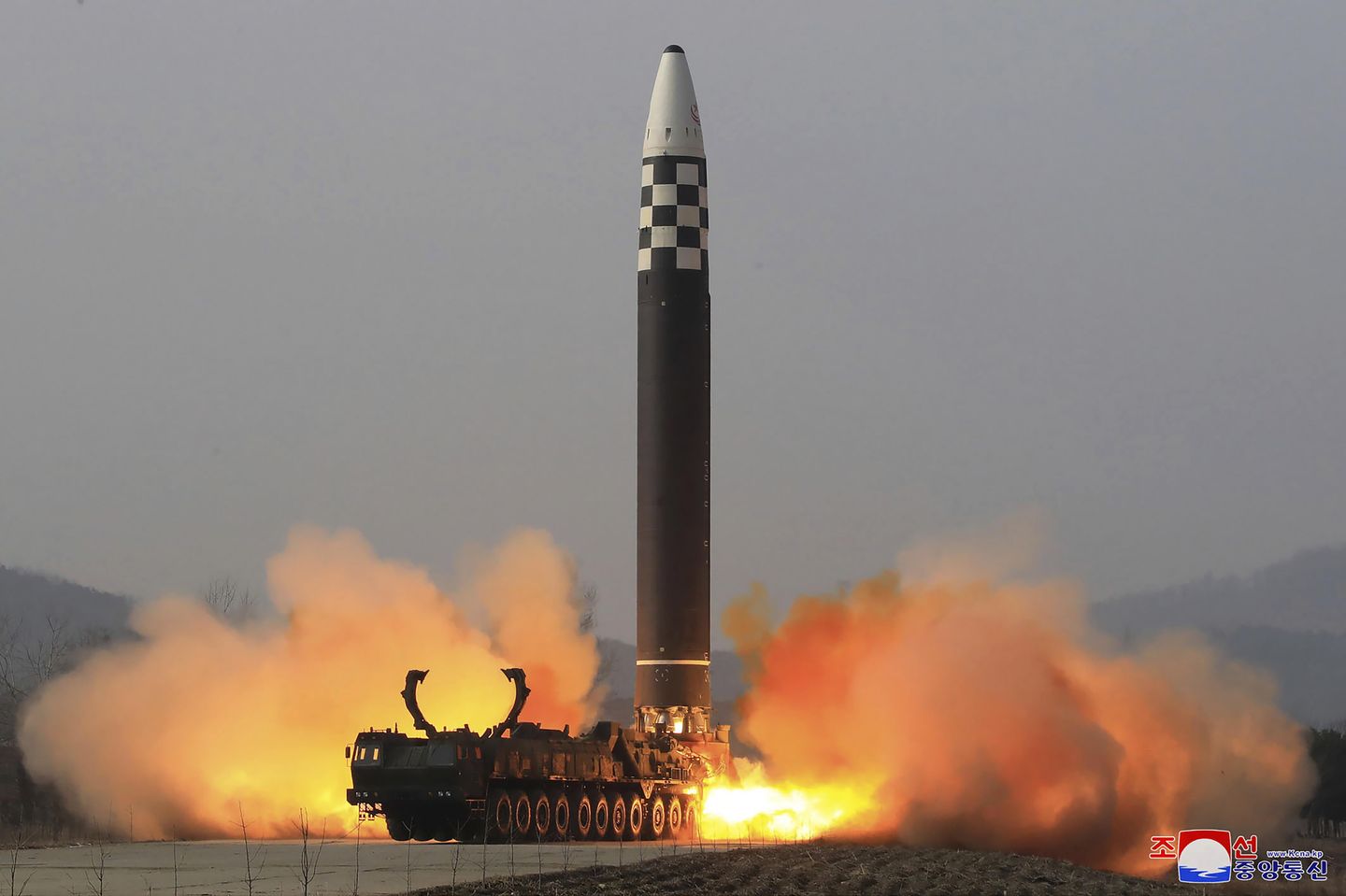

North Korea did not successfully launch a next-generation intercontinental ballistic missile last week in a test that alarmed and angered the U.S. and its Asian allies, South Korean military officials said Tuesday.
Confirming earlier doubts about the North’s claims to have tested a new Hwasong-17 ICBM on March 24, South Korea’s Defense Ministry told lawmakers Tuesday that the missile was in fact an enhanced version of the Hwasong-15 that Pyongyang first tested more than four years ago.
Seoul said that North Korea tried to deceive its own people and the world by claiming it was a Hwasong-17, even producing a slickly edited video of leader Kim Jong-un, clad in a leather jacket and sunglasses, observing the successful flight.
“Although the projectile fired on March 24 looks like the Hwasong-17 due to the increase in its top altitude and flight time, our assessment is that it is more similar to the Hwasong-15 than the Hwasong-17,” the Defense Ministry said Tuesday in a statement.
The Hwasong-17, paraded through Pyongyang at a national political rally in late 2020, is said to have a range of 9,000 miles — 1,800 miles farther than the Hwasong-15.
Both missiles are theoretically capable of striking targets across the U.S. mainland.
More significantly, the newer missile could carry multiple warheads compared to the single warhead on the Hwasong-15, greatly complicating missile defense efforts for the U.S. and allies such as South Korea and Japan.
Several factors raised suspicions about the North’s claim, including the fact that the closed country covered up a failed missile launch just eight days earlier. The speed, thrusting mechanism and timing of the stage separation for the missile’s trajectory also closely tracked those for the Hwasong-15.
South Korean analysts also said the footage of Mr. Kim observing the March 24 test at the Sunan International Airport was shot in the morning on a clear day, when it fact the test was carried out in the afternoon under overcast skies.
U.S. and South Korean analysts say last week’s test, if it was the older, Hwasong-15, showed some improvements in the ICBM’s capabilities. The missile flew higher and longer before landing in international waters than did the Hwasong-15 tested in November 2017.
South Korean officials said U.S. counterparts agreed with their preliminary assessment, but The Associated Press reported that Japanese officials believe the North’s test featured some kind of new ICBM model.
North Korea‘s state-controlled press has hailed the March 24 test as the inaugural trial for the Hwasong-17, even quoting ordinary citizens who say they were inspired by the achievement.
Pyongyang has yet to comment on the doubts raised by Seoul and private analysts.
